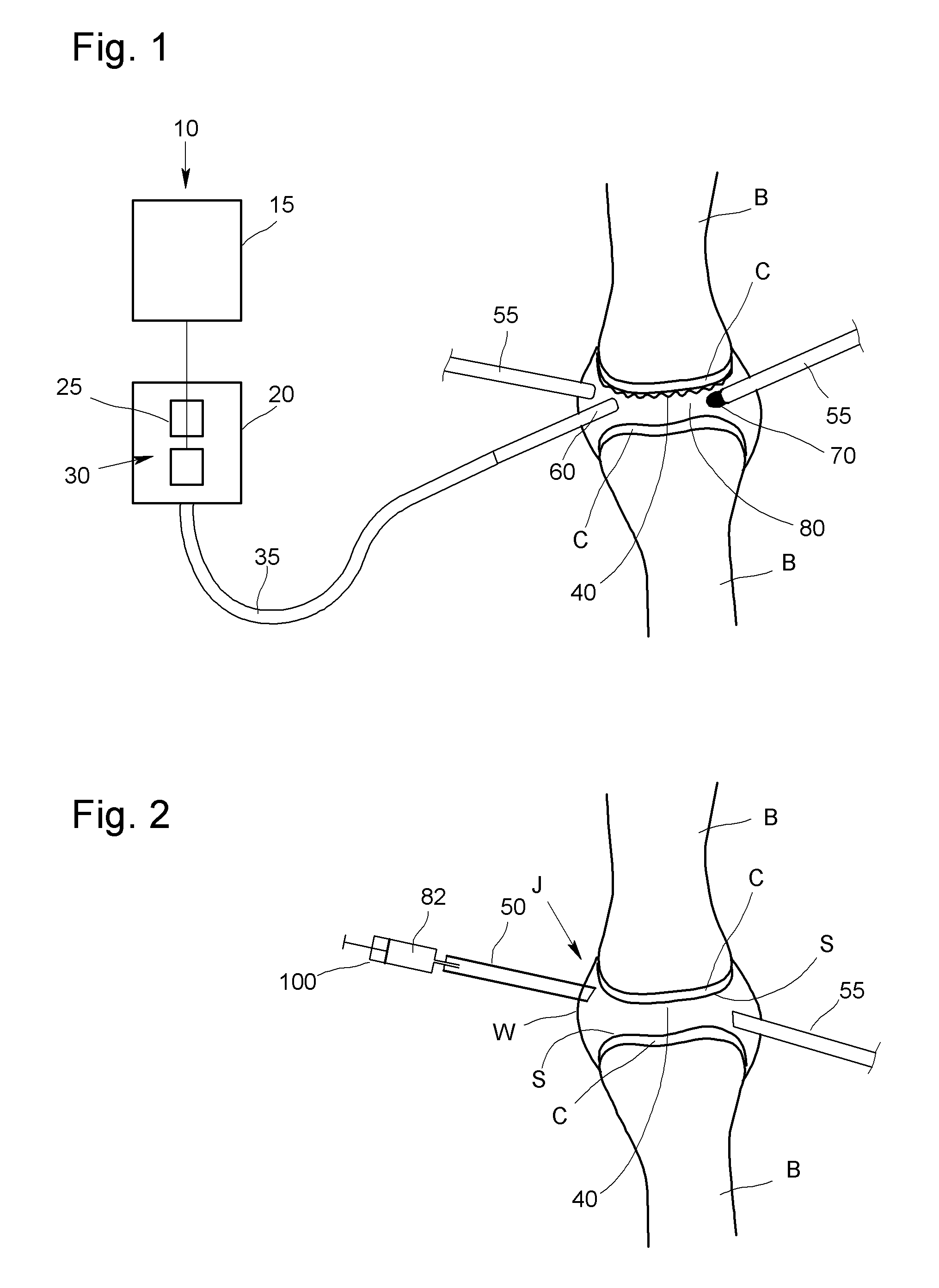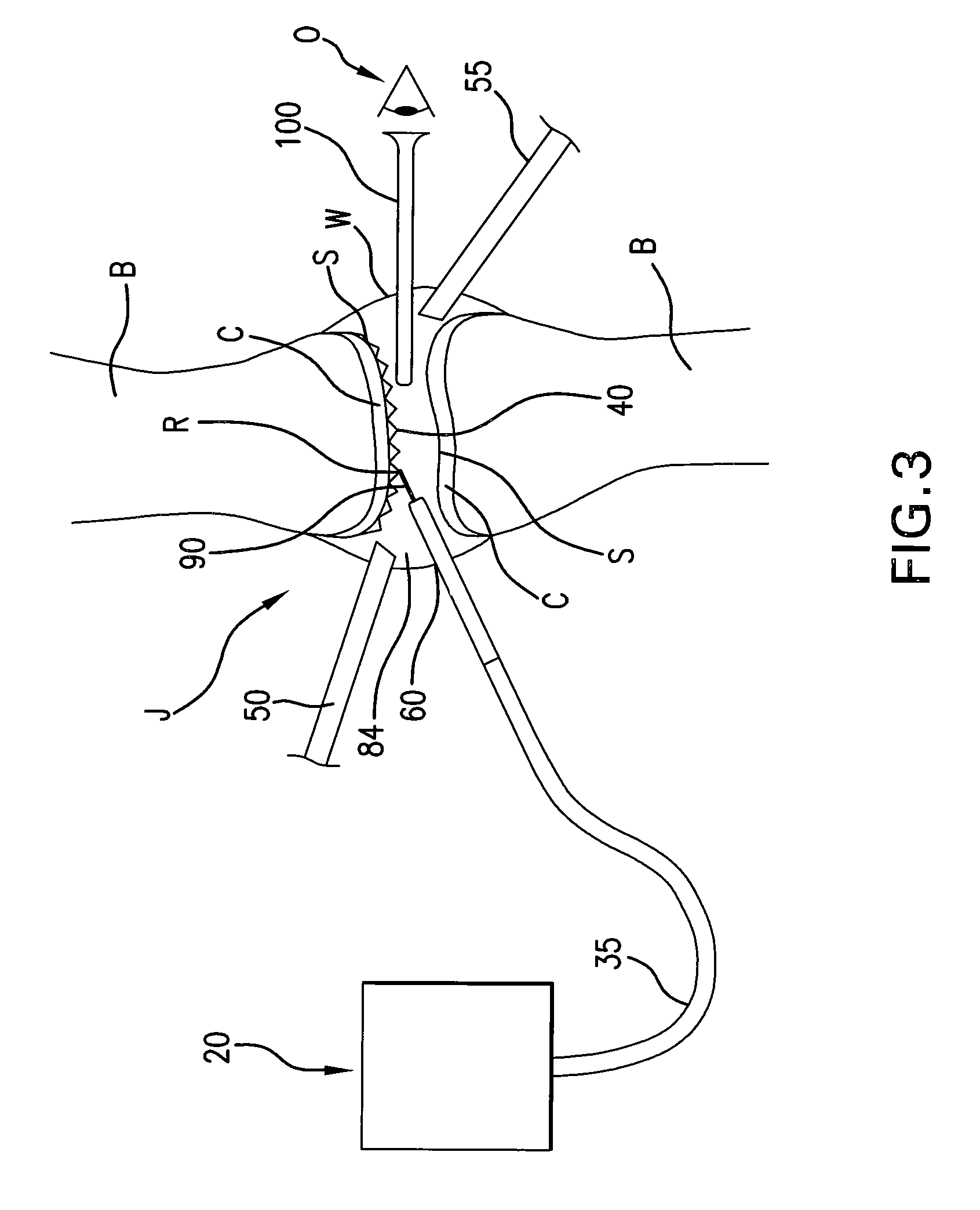Method for the ablation of cartilage tissue in a knee joint using indocyanine
a knee joint and cartilage tissue technology, applied in the field of knee joint cartilage ablation using indocyanine, can solve the problems of high cost of excimer laser, large amount of damaged cartilage, and inability of ordinary skill in the art to perform cartilage ablation in vivo
- Summary
- Abstract
- Description
- Claims
- Application Information
AI Technical Summary
Benefits of technology
Problems solved by technology
Method used
Image
Examples
Embodiment Construction
[0026]The apparatus of the present invention is a system for the ablation of cartilage tissue in vivo in a human or animal treatment subject. The present invention also includes a method for the ablation of cartage tissue in vivo in a human or animal treatment subject. While the present invention is described with respect to application to ablation of cartilage of the knee joint, the present invention is not limited in application to ablation of knee joint cartilage. The present invention may be applied to the ablation of human and / or animal cartilage in other joints as well, and even to nonarticular cartilage or to any tissue that fixes the dye.
[0027]The present invention is described with reference to FIGS. 1 to 4 where like parts are referred to using like character references. In addition, a non-limiting illustrative apparatus embodiment, in accordance with the present invention, will be described first followed by a description of a non-limiting method embodiment of the inventi...
PUM
 Login to View More
Login to View More Abstract
Description
Claims
Application Information
 Login to View More
Login to View More - R&D
- Intellectual Property
- Life Sciences
- Materials
- Tech Scout
- Unparalleled Data Quality
- Higher Quality Content
- 60% Fewer Hallucinations
Browse by: Latest US Patents, China's latest patents, Technical Efficacy Thesaurus, Application Domain, Technology Topic, Popular Technical Reports.
© 2025 PatSnap. All rights reserved.Legal|Privacy policy|Modern Slavery Act Transparency Statement|Sitemap|About US| Contact US: help@patsnap.com



